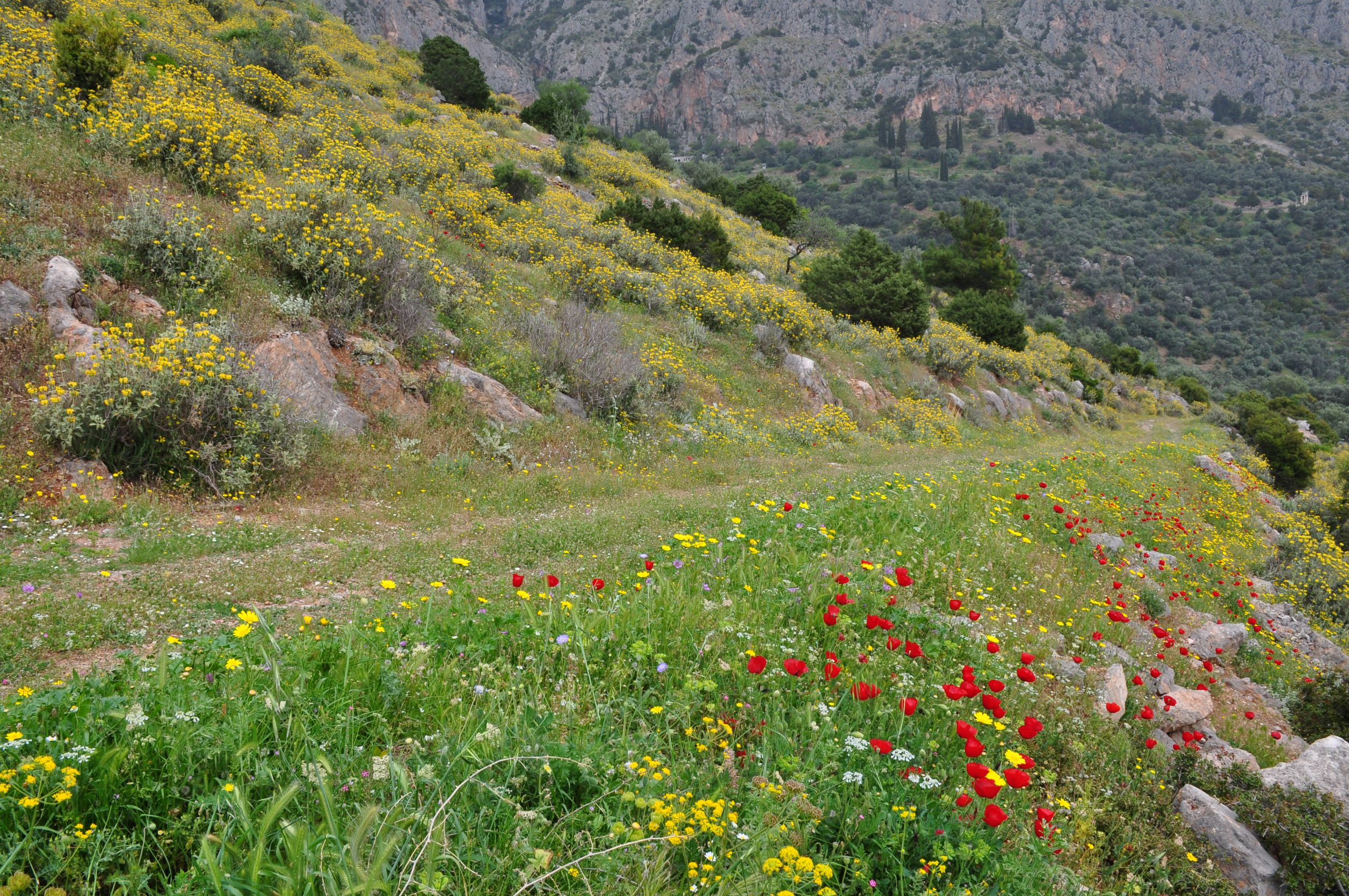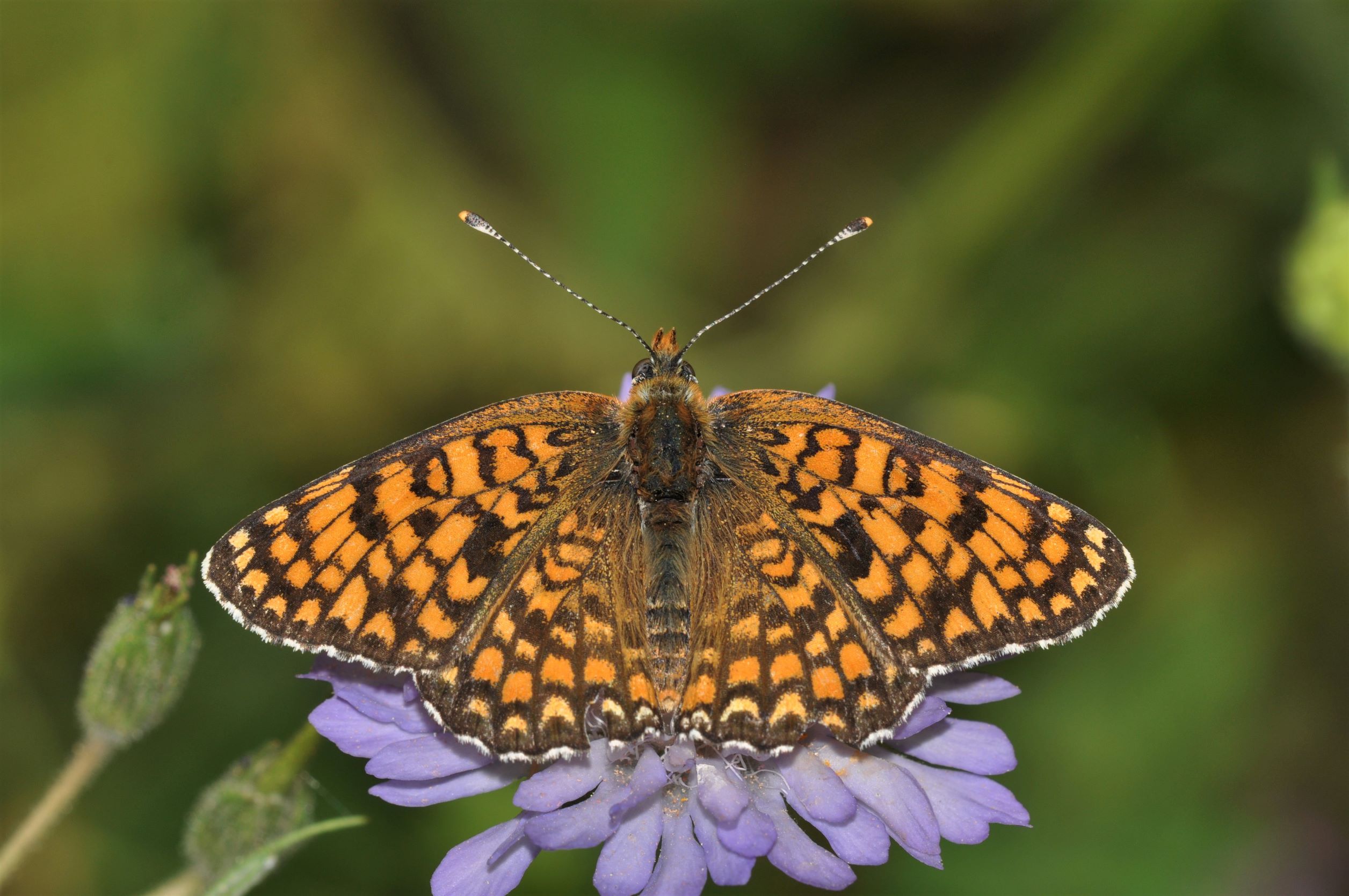|
Melitaea ornata / Eastern Knapweed Fritillary
Lindorja
Nymphalidae - Nymphalinae
Melitaea ornata Christoph, 1893. TL: Orenburg, Russia.
 
 
  
1a. Melitaea ornata, distribution map (09.i.2025).  Historical data ; Historical data ;  Additional data from the 2018 update ; Additional data from the 2018 update ;  New observations since the 2018 update. New observations since the 2018 update.
1b. Putative Melitaea ornata ♂ underside with the typical characters. Maliq, Albania (© Mario Finkel)
1c. Melitaea ornata pupa and exuvium. Demir Kapia, Republic of North Macedonia (© Peter Russell)
1d. Melitaea ornata pupa (darker form) and exuvium. Suva Planina, Serbia (© Peter Russell)
1e. Habitat of Melitaea ornata. Greece (© Sylvain Cuvelier)
1f. Melitaea ornata ♂ frontal. Greece (© Sylvain Cuvelier)
1g Melitaea ornata ♂upperside. Greece (© Sylvain Cuvelier)
Description
♂♂
Medium size butterfly. Fw: 20-24 mm.
Ups: bright fulvous, solid black markings.
Upf: large marginal lunule in s3.
Uph: no black dots in submarginal band.
Uns: pale gc, reduced orange and black markings.
Unh: black marginal lunules thicker, triangular not forming a continuous line.
♀♀
Larger.
Ups: similar markings.
Unh: black marginal lunules thicker, triangular not forming a continuous line.
Similar species
Identification between Melitaea ornata and M. phoebe, based on external morphology, including distal end of antenna, is unreliable.
Identification based on genitalia (♂♂ and ♀♀) is difficult, subtle differences have been mentioned.
COI barcoding is distinctive.  
As from L4, the head of the larvae are distinctive: black head for M. phoebe, red head for M. ornata.
Life cycle
Adults: single generation, sometimes small partial second generation, from end-April to July.
Egg: short stage.
Caterpillar: overwintering.
Pupa: short stage.
Habitat
Melitaea ornata inhabits dry and warm rocky slopes with higher growing flowering plants with scattered bushes from lowland up to above 1000 m a.s.l.
Spatial requirement modest, population density moderate.
Foodplants
Caterpillars feed mainly on Centaurea sp., also mentioned are Carduus sp., Cirsium sp., Cynara cardunculus and Onopordum illyricum.
Butterflies feed on flowers, often of the own foodplant.
Distribution
Albania: very local (more research needed)
Balkan: AL - BG - BIH - GR - HR - NMK - MNE - RKS - RO - SLO - SRB
Europe: IB (sibling species M. pseudornata) - IT* - ALP* - BAL - NWE - UK - SCA - EEU
Asia Minor and Near East (needs further study)
Conservation status
Melitaea ornata is not endangered.
Albanian Red List: DD.
IUCN Red List, category at the Mediterranean level: NA.
Useful links
Lepiforum
Euroleps
euroButterflies
|
 xx
xx 




 Historical data ;
Historical data ;  Additional data from the 2018 update ;
Additional data from the 2018 update ;  New observations since the 2018 update.
New observations since the 2018 update.